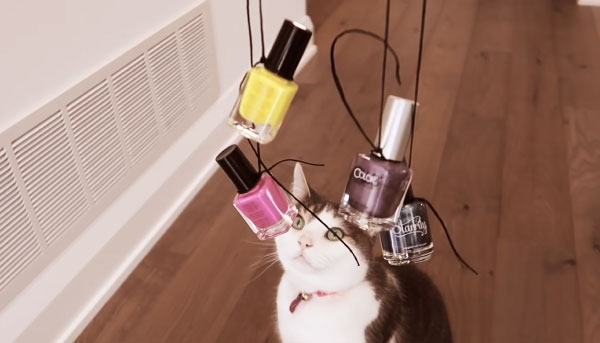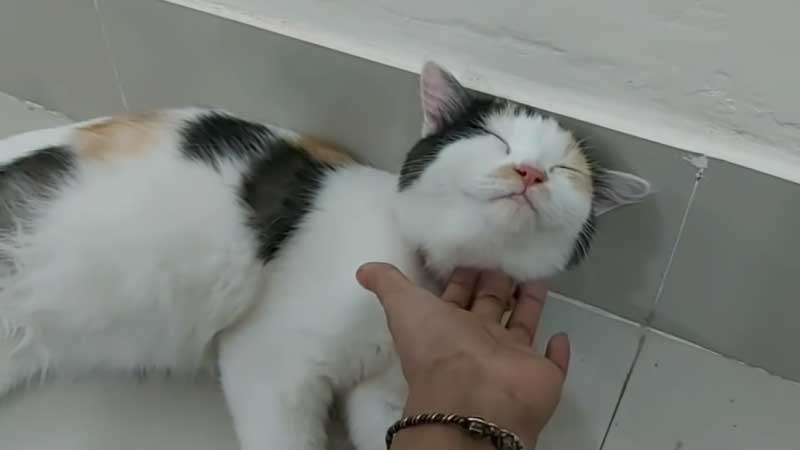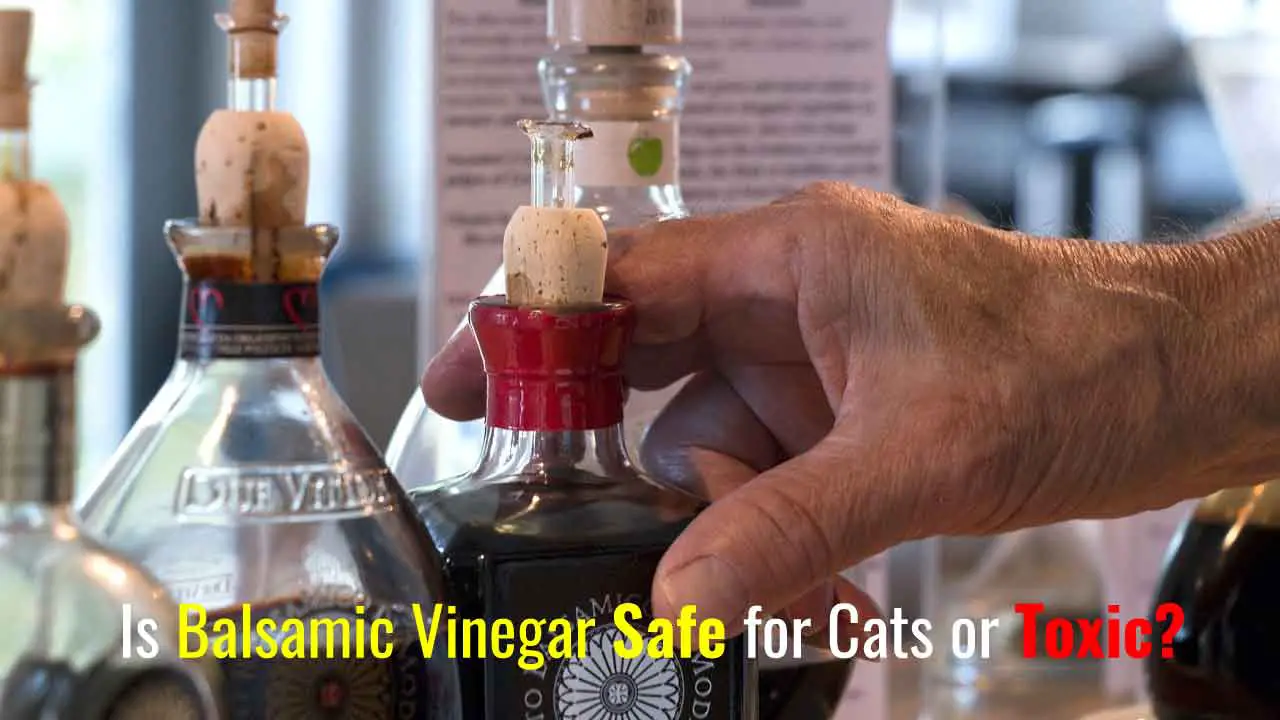A few days ago, Lucinda asked me, “Can I paint my cat’s nails? Is it safe for cats?” Because she wants to make her feline nails a bit more attractive. That’s why, in the early stages, she wanted to know about those related questions.
After doing additional research, I gave her some suggestions about “Is it safe to paint cat’s nails? and how to paint your cat’s nails.” I also provided step-by-step instructions, expert tips, and answers to frequently asked questions, which I mainly presented in this detailed guide. So let’s get started.
Table of Contents
Can I Paint My Cat’s Nails with Nail Polish?

Undoubtedly, your cat’s nail polishing process can be an enjoyable and creative activity for you and your feline buddy to share together. It helps you express the one-of-a-kind personality and sense of style that your cat possesses. Before moving on to this effort, there are a few things that you must consider.
Is It Safe to Paint My Cat’s Nails?
As we mentioned earlier, it is essential to ensure your cat’s health and safety before you decide to paint their nails. Remember the following important considerations:
- Nail polish formulated for cats: Only use nail polish specifically designed for cats, as human nail polish contains chemicals that can be harmful if ingested or absorbed through the nail bed.
- Cat’s temperament: You should consider your cat’s personality and willingness to help. Sometimes, you may know that nail polishing can be a stressful or uncomfortable experience for some cats, while others may be more willing to accept this nail polishing process.
- Avoiding toxic ingredients: Always avoid nail polishes that contain formaldehyde, toluene, and dibutyl phthalate, as well as any other toxic materials that may be dangerous to your and your cat’s health.
How Do You Safely Paint Your Cat’s Nails? (Step by Step)

If you have concluded that your cat is mature enough to take part in a nail polishing process, then carefully go through these step-by-step instructions to ensure that your cat is both safe and has a pleasant experience:
Step 1: Gather the Supplies
Before you get started, you need to collect the following supplies:
- Cat nail clippers
- Cat-friendly nail polish
- Cotton balls or pads
- Cat treats or rewards
- Nail polish remover (for emergencies)
Step 2: Introduce Your Cat to the Process
It is essential to use a slow and steady approach when introducing your cat to the process of having his nails painted. Get to know them through the scent and texture of the nail polish by giving them the opportunity to test it and associating it with positive experiences.
Step 3: Prepare Your Cat’s Nails
Before applying the nail polish, ensure your cat’s nails are clean and trimmed. Gently clip the tips of their nails, being cautious not to cut into the quick, which can cause pain and bleeding.
Step 4: Apply the Nail polish.
The next step is to apply the nail polish, so get ready. Move ahead in the following way:
- Keep your cat at your convenience by holding its paw firmly but gently.
- Coat each nail with polish, trying to take care to avoid the quick and the skin around it.
- Allow the nail polish to dry completely before letting your cat walk or groom themselves.
Step 5: Reward and Reinforce Positive Behavior

After you have finished painting your cat’s nails successfully, praise and treats are appropriate ways to show your appreciation for them. Positive rewards will help your cat understand the experience as something enjoyable, making future nail painting sessions more comfortable for both of you.
Difference Between Actual Nail Paint and Nail Caps (Soft Paws)
While some owners might be tempted to use regular nail polish, the safer and more popular alternative is nail caps, commonly known by the brand name Soft Paws.
Comparison Between Cat Nail Paint vs Cat Nail Caps
| Feature | Nail Paint | Nail Caps (Soft Paws) |
|---|---|---|
| Safety | Can contain toxic chemicals. Risk of ingestion if cat licks it. | Typically made from non-toxic vinyl. Safe if ingested in small amounts. |
| Longevity | Lasts a few days to a week, depending on the cat’s activities. | Lasts 4-6 weeks, depending on the cat’s nail growth. |
| Application Process | Requires holding cat still, applying paint, and waiting for it to dry. | Requires trimming cat’s nails, applying adhesive to the cap, and then attaching the cap to the nail. |
| Removal | Can be challenging; requires nail polish remover, which can be harmful. | Caps fall off naturally as the nail grows or can be clipped off during regular nail trims. |
| Aesthetic Appeal | Limited to the color and design of the polish. | Comes in various colors and designs. Can mix and match. |
| Protection | Offers no protection from scratching. | Prevents cats from scratching furniture or people. |
| Cost | Price varies by brand; generally cheaper. | More expensive initially, but provides longer-lasting value. |
| Comfort for Cat | Potential discomfort or stress from paint fumes and drying process. | Some cats might need an adjustment period but generally become comfortable quickly. |
Why Traditional Nail Paint Isn’t Safe for Cats
While the idea of painting a cat’s nails might seem fun, it’s crucial to ensure that any product or method used is safe for the cat. Nail caps, like Soft Paws, are a more cat-friendly alternative to traditional nail polish, both in terms of safety and functionality.
- Toxic Chemicals: Many traditional nail polishes contain chemicals like formaldehyde, toluene, and dibutyl phthalate. These chemicals can be toxic if ingested, and there’s a high likelihood that a cat will lick its paws and ingest the polish.
- Fumes: The strong fumes from nail polish can be irritating or harmful for cats. Their sense of smell is much more developed than ours, and what might seem like a mild scent to us could be overpowering for them.
- Drying Time: Cats are not known for their patience. Holding a cat still long enough for nail polish to dry can be stressful for both the cat and the owner. There’s also a risk that the cat might smudge the wet polish, leading to an even greater ingestion risk.
- Removal: To remove nail polish, you often need a nail polish remover, which contains acetone or other chemicals. These can be extremely harmful if ingested or if they come into contact with a cat’s skin.
Recommended Nail Cap Sizes Based on Cat’s Age and Weight
| Age/Weight of Cat | Recommended Nail Cap Size |
|---|---|
| Kitten (up to 5 months or 5 lbs) | Kitten Size |
| Small Cat (6 months or 6-8 lbs) | Small |
| Average Cat (9-13 lbs) | Medium |
| Large Cat (14 lbs and above) | Large |
Remember, the key to a successful nail cap application is patience. Cats might be apprehensive about the process at first, so it’s crucial to make the experience as stress-free as possible. Offer treats, praise, and lots of affection to make it a positive experience for both you and your feline friend.
Is Cat Nail Caps Good or Bad? Pros and Cons of Using Cat Nail Caps
Nail caps, sometimes known by popular brand names like Soft Paws, offer an alternative solution for cat owners looking to prevent their feline friends from causing damage with their claws. Like any product, nail caps come with both benefits and potential concerns. Let’s delve into the pros and cons of using nail caps on cats.
Pros of Using Cat Nail Caps
Cons of Using Cat Nail Caps
How Often Should You Replace Cat Nail Caps?
Nail caps, when used correctly, can be a great way to prevent unwanted scratching while allowing cats to retain their natural claws. However, as with many pet-related products, understanding their lifespan and maintenance is crucial. To gauge when to replace nail caps, it’s essential first to understand the growth cycle of cat nails.
On average, nail caps last between 4 to 6 weeks on most cats. This duration correlates with the growth rate of a cat’s nails and the natural shedding process.
It’s not uncommon for some caps to fall off before others, especially if a cat is particularly active or if certain claws grow faster than others.
Signs That It’s Time to Replace
While nail caps are a semi-permanent solution, they do require regular maintenance to ensure they remain effective and comfortable for the cat.
- Visible Nail Growth: If you notice that the cat’s claw is starting to extend beyond the tip of the nail cap, it’s an indication that the nail is growing and that the cap may soon detach.
- Loose Caps: If a nail cap feels loose when you gently press it, it’s likely nearing the end of its adhesive hold and will soon fall off.
- Missing Caps: If you notice that one or more caps have already fallen off, it’s a good time to check all the nails and replace any caps that are missing or seem loose.
- Changes in Behavior: If your cat starts biting at its nails more than usual or seems irritated by its paws, it might be feeling discomfort from an improperly fitting cap or one that needs replacement.
- Regular Checks: Even if you don’t notice any immediate signs, it’s a good practice to check your cat’s nail caps every couple of weeks to assess their condition and fit.
FAQs About Painting Your Cat’s Nails
Can I use regular nail polish designed for humans on my cat?
The short answer is no; experts said that human nail polish is unsafe for cats. Because most human nail polish contains chemicals that can be toxic to cats if inhaled or absorbed through the nail bed, Use nail polish specifically formulated for cats.
How often should I paint my cat’s nails?
How often you paint your cat’s nails should be determined by the cat’s lifestyle and speed of nail growth. Some cats may require more regular touch-ups, while others may need their nails painted less often. Keep an eye on your cat’s nail growth, and paint them when necessary.
If my cat licks the nail polish, what should I do?
If your cat licks the nail polish before it dries, it is essential to take action quickly. Get in touch with your veterinarian for advice. Consuming nail polish can be harmful to cats, who may need urgent medical attention.
Can I paint only some of my nails or claws?
The short answer is yes. You can choose to paint only certain nails or individual claws if your cat is more comfortable with that. However, before applying nail polish to your cat, do research to ensure it is cat-friendly.
My cat doesn’t like having their paws touched. How can I paint their nails?
If your cat is unfriendly to having their paws touched, it may require gentle desensitization. Start by gently touching and massaging their paws and rewarding them with treats and praise. Over time, your cat may become more comfortable with the nail painting process.
What if my cat scratches the nail polish off?
If your cat scratches or chips the nail polish, then you can touch up the nails that were affected. But before you reapply the nail polish, you need to ensure that the nails are clean and dry.
Conclusion
Before painting your cat’s nails, you must consider your cat’s safety and comfort so you can enjoy a pleasant nail painting session. Remember, you must use cat-friendly nail polish, observe your cat’s behavior, and if you see any worries, seek veterinary advice.
So go ahead and add a pop of color to your cat’s claws—they’ll surely enjoy the additional attention!




